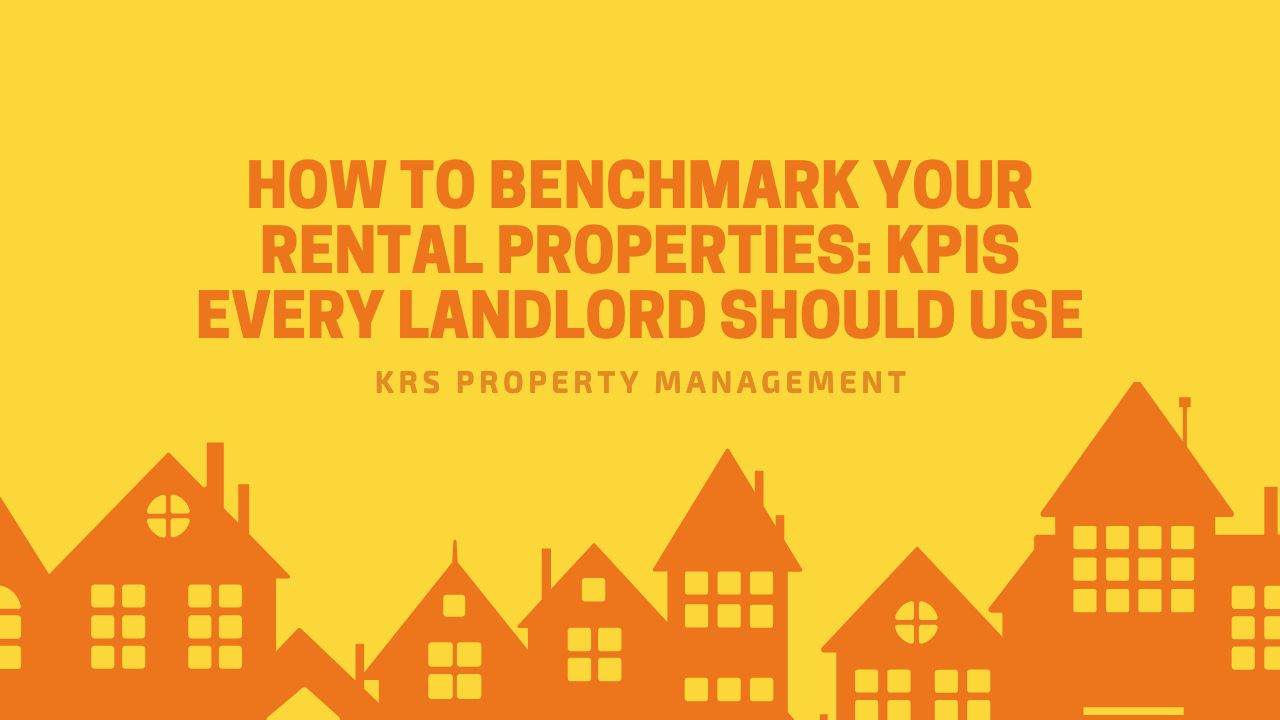Key Takeaways
Track KPIs to Understand True Performance: Monitoring cash flow, expenses, vacancies, and renewals gives landlords a clear picture of how well their rentals are actually performing.
Use Metrics to Guide Smarter Decisions: KPIs help identify where to cut costs, when to invest, and how to improve long-term profitability.
Balance Risk and Reward With the Right Financial Ratios: Cap rate, LTV, and DSCR reveal whether your portfolio is stable, overleveraged, or ready for growth.
Tenant-Focused Metrics Drive Long-Term Success: Vacancy and renewal rates highlight resident satisfaction and directly impact your overall returns.
We know the difference between a good landlord and a great one comes down to numbers. Savvy property owners don’t describe their portfolio with adjectives, they track it with precision: cash flow versus loans, vacancy days, and tenant renewal rates.
These key performance indicators (KPIs) aren’t just metrics, they’re the roadmap to smarter decisions and higher returns. In real estate, instinct might get you in the door, but understanding your numbers is what keeps you profitable.
Let this guide from KRS Property Management show you exactly which KPIs to track and how to benchmark your rental properties for long-term success.
What Your Numbers Really Say
Every rental property, from a single duplex to a multi-unit complex, speaks in signals. Rent collections, expenses, renewals, and vacancies all reveal whether a property is building wealth or quietly losing momentum.
Track those signals consistently, and the noise turns into insight, showing exactly where to cut costs, invest more, or double down.
For property owners, a few key metrics act as a compass, mapping cash flow, leverage, efficiency, and tenant stability, the four pillars that separate managing a property from running a profitable business.
The KPIs That Drive Performance
Before you can benchmark your portfolio, you need to understand the core metrics that reveal how well your rental properties are truly performing.

Cash Flow
This is where everything begins the actual money that remains after paying bills, taxes, and debt. Positive cash flow isn’t just comfort; it’s flexibility. It lets you upgrade units, handle rental vacancies without panic, and reinvest with confidence.
Net Operating Income (NOI)
Think of NOI as your property’s report card before loans and taxes. It’s the cleanest measure of operational performance. If NOI rises year over year, your management is doing its job: expenses are controlled, and your rents are earning their keep.
Operating Expense Ratio (OER)
Every dollar spent on upkeep should protect more than a dollar of value. The OER compares costs to income and keeps inefficiencies from creeping in unnoticed. Rising ratios often hide in routine, an auto-renewed vendor contract here, a delayed inspection there. Small leaks, big impact.
Risk, Return, and Realism
Real estate rewards those who balance ambition with caution.
Cap Rate shows what your money earns relative to property value. A 6–8% cap rate often signals stability, though context matters: a city-center asset and a suburban one can’t be judged by the same ruler.
Loan-to-Value (LTV) measures leverage, how much of your asset is truly yours versus the bank’s. Staying under 80% keeps you nimble when refinancing or expanding your portfolio.
Debt Service Coverage Ratio (DSCR) ensures income comfortably outpaces debt payments. A DSCR above 1.25 means breathing room; below 1.0 means you’re playing catch-up. Lenders love it. So should you.

The Human Side of Data
Spreadsheets don’t capture tenant satisfaction, but the metrics do.
Vacancy rates and renewal rates are your early warnings. A growing vacancy trend might mean rents are overpriced, or that maintenance response times lag.
Retention is the quiet multiplier in every successful rental portfolio. Keep tenants happy, and you reduce marketing costs, downtime, and wear-and-tear, all without spending a dollar on new leads.
From Metrics to Motion
Knowing the numbers is one thing. Making them work is another. The most effective owners turn KPIs into weekly habits.
Streamline Turnovers: Prep materials early, coordinate cleaners and maintenance, and measure time from move-out to move-in.
Price With Evidence: Check comparable properties weekly. A $50 rent gap across ten units is thousands in annual margin.
Renew Early: Reach out 90 days before leases expire; offer flexible terms or small perks. Retention beats advertising.
Prevent, Then Repair: Routine inspections stop costly surprises before they hit your P&L.
Market Visually: Professional photos and 60-second tours outperform text-heavy listings.
Every habit compounds. Every KPI, tracked and adjusted, becomes a tool for control.
Avoiding the Traps
The most common mistakes aren’t about math, they’re about meaning. Fixating on a single number blinds you to others such as tenant churn. Profitability isn’t sustainable if turnover costs behind that strong NOI quietly drain any future ROI.

Ignoring market shifts locks you into outdated expectations. What worked during low interest rates or high demand may now require new pricing, marketing, or financing strategies.
Overlooking the tenant experience erodes long-term profitability, one complaint at a time. Happy residents stay longer, refer others, and turn your property into a steady, self-marketing investment.
Strong operators view metrics as a constellation, not a spotlight. Every data point connects to another.
The Mindset Shift
Owning real estate used to be about gut feel, “good area, steady rent, reliable tenants.” Now it’s about visibility. The owners who win aren’t the loudest or flashiest; they’re the ones who know their numbers so well they can sense trouble and move before it happens.
Data doesn’t make property management impersonal, it makes it intentional. When you measure what matters, you build stability instead of waiting for it.
Contact Us Today
Final Takeaway
The numbers behind your rentals tell a story, if you know how to read them. By tracking the right KPIs, you gain more than financial insight; you gain control. Data-driven decisions let you plan for stability, anticipate risk, and scale your portfolio with confidence.
At KRS Property Management, we turn metrics into momentum. Our team helps landlords track, interpret, and act on key performance data, from rent roll analysis to tenant retention strategies, so you can focus on growth instead of spreadsheets.
Let’s talk about how your numbers can work harder for you. Contact KRS Property Management, today to turn insights into measurable, lasting results.







